I had never played an Animal Crossing game before I played New Horizons at PAX East. In retrospect, I don’t really know what took me so long.
Fans of the series already know how charming and irrevocably lovely New Horizons is. That’s been shown in the screens and trailers Nintendo has released over the past nine months or so. What they might not know is exactly how some of the game’s systems work to create one of the more enrapturing simulation games I’ve ever played.
During my PAX East demo, I was able to play 45 minutes of New Horizons at various stages. While I can’t yet talk about everything I saw, I can shed some light on a few things we already know about New Horizons — and a few things we might be wondering about.
Let’s start with getting around.
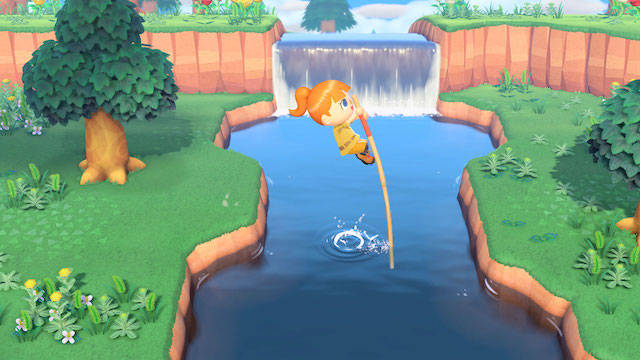
Movement in New Horizons is simple and smooth, and the map in the lower right-hand corner of the screen is clear and easy to understand. It shows the main points of interest, including your house (or tent in the early-game), Resident Services, and many of your island’s other buildings. It also shows you important landmarks such as rivers and oceans.
I particularly like that the map is fully uncovered at the beginning of the game, allowing you to immediately acquaint yourself with your surroundings. You can look at it via your NookPhone.
One of the things we’ve known about for a little while is pole-vaulting, but we didn’t quite know why or how we’d use it. Turns out it’s one of the primary ways you cross bigger rivers and get to other areas of the map.
Honestly, it’s much more fun than it has any right to be, and I spent a full 30 seconds pole vaulting from one side of a river to the other before moving on to the rest of the demo. The animation is seamless and just plain fun to watch, and I did it every chance I got.
But the islands in New Horizons aren’t all flat-land. Hills and little mountains crop up all over the landscape. To climb those and get to new areas to forage and farm materials, you’ll need a ladder, which is also fun to use, even if it seems to have only a singular purpose.
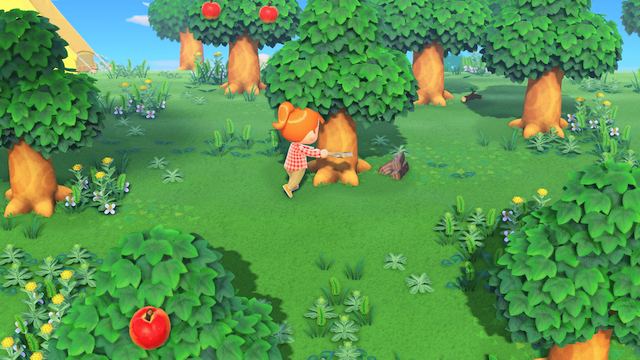
Of course, you have access to other tools as well, such as axes, shovels, and fishing poles. While I wasn’t able to use the latter, the axe and the shovel come in handy pretty early on.
Crafting plays a big role in New Horizons not just because you’ll want to make new things, but because tools break, too.
Part of making new items, such as furniture and awesome little doo-dads, entails picking up materials from the ground or gathering them from objects in the world. In a twist from games such as Stardew Valley, trees specifically don’t disappear when you chop them and gather all their wood. Instead, they stay where they are and regenerate materials, letting you come back for more later.
To move them to a new location or create a new space for a building, you can use the shovel to dig trees up and put them in your pocket. You can also use the shovel to dig holes in the ground and, thankfully, refill them. You can also use the shovel to dig up fossils for the museum, though I didn’t run across in any while I was playing.
In another bright spot, the radial menu for items is accessible by way of a simple button press, and it stays up until you pick an item or close it. You don’t have to hold down a button and a control stick at the same time. In a sentence, the radial menu in New Horizons is to die for.
However, something I do wish was a bit clearer was tool durability. Tools can break, but there’s no meter telling you how far along you are — or at least it’s not very clear. Some tools carry the denotation of “Flimsy Axe,” for example, so it’s likely you’ll get access to more durable tools as you play through the game.
Luckily, making new tools and items is a cinch at the crafting bench, which you can build yourself or access at Resident Services.
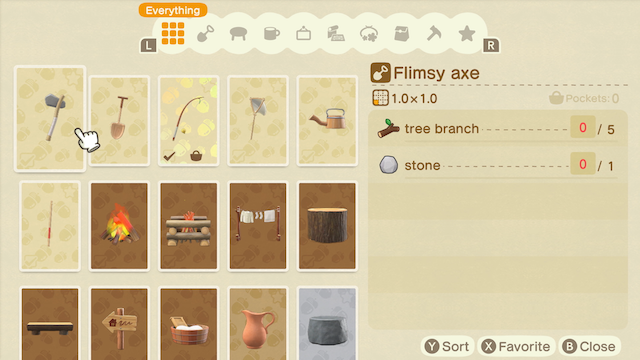
One of the things Nintendo really impressed upon me during the demo was that New Horizons is a game about discovery and customization. Part of the reason I’m being so coy about some of this is that I want you to discover it just as I did, such as one little cool outfit-changing spot I don’t want to spoil.
But with that in mind, character customization is a breeze.
Aside from unlocking them, there are several ways to buy new clothes and accessories at the Able Sisters shop. You can pick up individual items from the floor, where you can buy them one at a time, or you can try on full outfits, buying a set of matching (or clashing) items all at once.
There are a lot of options, ranging from hats and pants to shirts and glasses. To keep things simple, you don’t change the color of items on a color wheel or through a set of other color options. Instead, each item has multiple entries in the shop in different colors.
It actually felt much faster to just scan across the items for a color rather than pick an item and then choose the color from another submenu.
I also love the fact that you don’t have to go in and out of individual menus to pick different options or to see your entire outfit. Simply click on what you want and presto, you see it. I won’t spoil what items you can put on, but even though items were still being added daily (some had even been added the morning I played the demo, according to a Nintendo rep), there is a wide array of options already available.
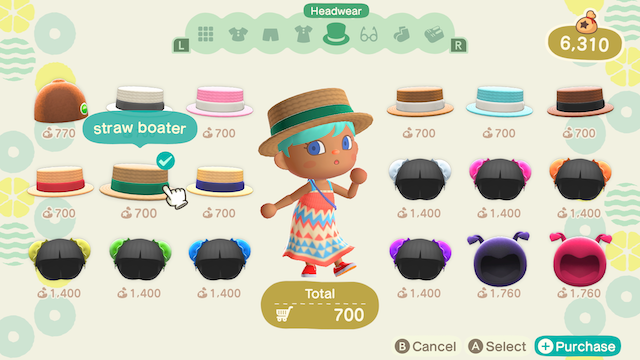
As you perform certain actions, you get Nook Miles, which you use to unlock items like hairstyles and phone cases. There are both long-term actions and short-term actions that reward you with Miles, and you can access your Nook Miles at any time by entering the game’s menu or stopping by the Nook Stop.
Implementing short-term goals gives the player easily-achievable milestones and keeps the game from getting too daunting. You’re always achieving something in New Horizons, and I really appreciate that, especially in a game predicated on player-controlled creation and discovery. I might not feel like gathering and selling a large amount of fruit, but chopping down 10 trees is a cinch.
In essence, many of these goals are achievable through normal play, such as when you decide to upgrade from a tent to a house.
Speaking of, customization wouldn’t be complete without tailor-made houses. While you start in a tent, you can build your way up to a nice, cozy house. I was able to explore two houses in the demo, and though I didn’t see every decorative item, I can say there’s a great variety to be had.
Toilets, race-car beds, farm-style armoires, funky lights, couches, TVs, mirrors, refrigerators, house-plants. There’s something for every style and mood.
Aside from being aesthetically pleasing, houses can also act as storage units for items once your pocket gets too full. However, you must retrieve materials from your house before you can use them in crafting. Items will not automatically transfer to your pocket.
While building up your island is fun by yourself, getting help isn’t too shabby either. Multiplayer is as simple as pressing a few buttons, and if you initiate the co-op session, you’re the primary player the camera follows, while the second player is the follower.
The primary player can perform all of their normal actions, such as farming for materials, picking up materials, and talking to NPCs. The second player can only perform actions such as chopping down trees. They can’t store things or speak to NPCs.
If something is an “automatic pickup” and is “picked up” by the second player, the item or material automatically goes to resident services so the primary player doesn’t lose it. If a secondary player gets too far away from the primary player, they’ll be teleported back on screen to keep everyone together.
Unfortunately, I didn’t get to play much multiplayer during my session, and though I passed by the airport, I wasn’t able to go inside. In that sense, multiplayer feels fun if fleeting. I can certainly see the use and draw of it, but I also think the bigger pull is visiting other islands like a tourist, not picking up sticks and wood to help someone else actually build theirs.
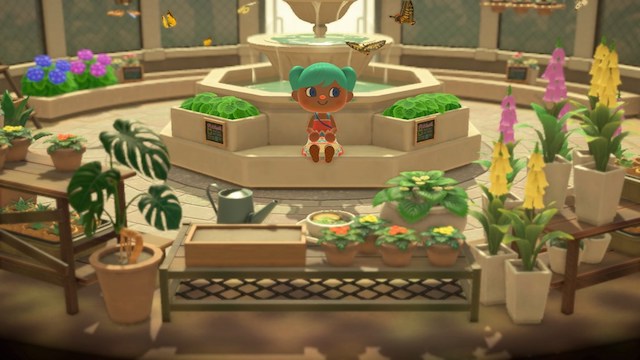
Saving the best for last, the museum in AC:NH is one of the best ever. It’s Stardew Valley’s community center to the Nth power, and it looks fantastic this time around. This is where you display all of the bugs you’ve caught, fossils you’ve dug up, and fish you’ve hooked.
The three branches of the museum house different specimens. The eastern wing is the aquarium; the western wing is the arboretum; and the northern wing is the fossil exhibit. Each wing has multiples rooms to fill and explore. Inside these rooms are tanks, terrariums, and displays complete with informational plaques.
Neatly, you can stand in certain spots to get a wide-angle view of all of the tanks or individual exhibits at once. It also allows you to see animals and fossils from unique perspectives.
It’s a great way to display the achievements players have accomplished, while also giving them greater incentive to complete collections.
—
Animal Crossing: New Horizons is a game about exploration, crafting, and sharing. It’s about creating your own unique island through discovery and then sharing it with the world. It takes systems found in other simulation games and seemingly iterates on them in compelling ways.
I don’t know if New Horizons will please series fans or not, but it’s certainly made a fan out of me. Relaxing, intuitive, and just good fun, this is one game that’s convinced me to buy a Switch.
There’s still a lot more to learn about AC:NH, so stay tuned to GameSkinny for our full review in the coming weeks.

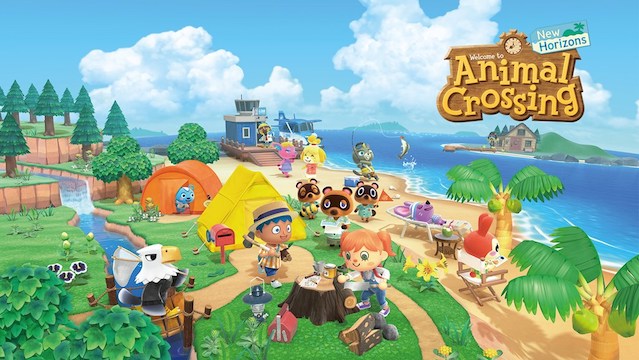
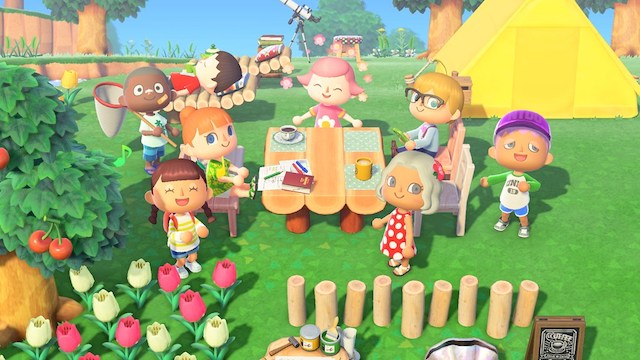





Published: Mar 5, 2020 06:20 pm